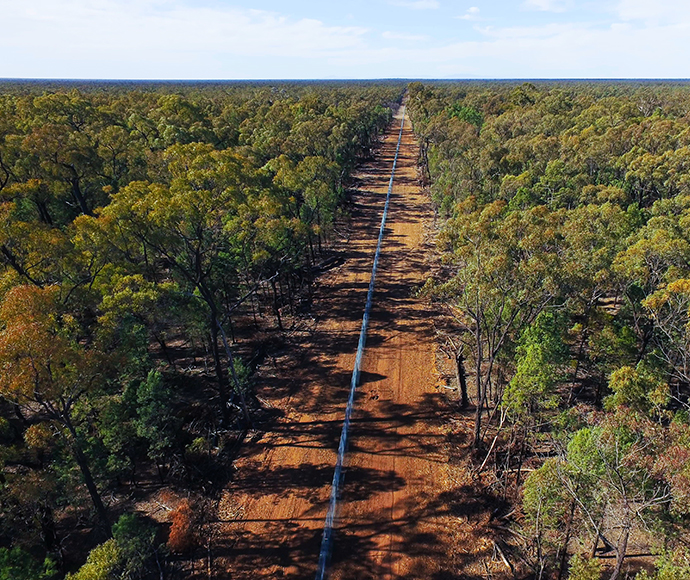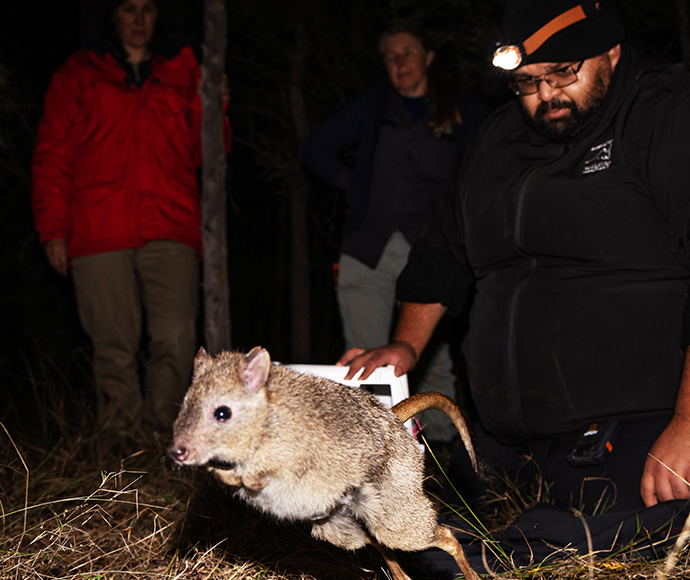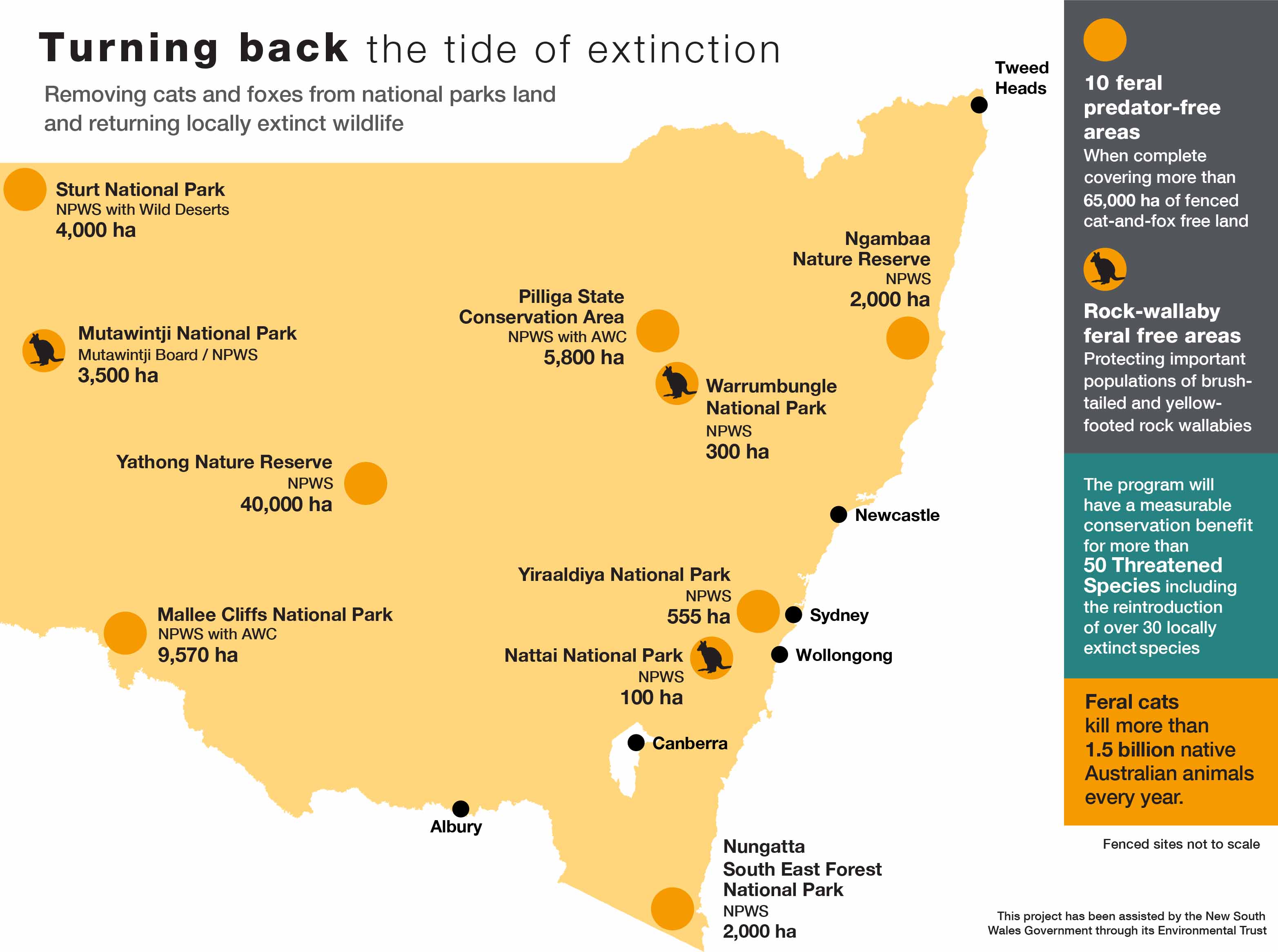'Ecosystem engineers' return to the Pilliga
One of the 10 feral predator-free areas on the NSW national park estate is in the Pilliga State Conservation Area, on Gamilaraay Country south of Narrabri in the state's north-west.
By 2026, a total of 6 locally extinct mammal species will be reintroduced to this safe haven as part of the innovative project, which is a partnership between the NSW Government and Australian Wildlife Conservancy (AWC).
The team has already reintroduced the greater bilby, bridled nail-tail wallaby, brush-tailed bettong, plains mouse and Shark Bay bandicoot into the Pilliga's feral predator-free area. Future reintroductions planned for the site include western quoll.
These mammals act as 'ecosystem engineers' in the landscape, digging burrows, aerating the soil and creating niches for moisture, spores and seed and shelter for other species.
The first mammals were released in late 2018, with 60 pioneering greater bilbies dashing into the vast Pilliga landscape.
The feral predator-free area covers 5,822 ha of mesic temperate woodland habitat, surrounded by 32 km of fox- and cat-proof 1.8 m high fencing. Once fencing was finished in 2018, the team removed feral animals, including the key predators, cats and foxes.
As well as the 6 locally extinct species being reintroduced here, the feral predator-free area will provide conservation benefits for many other resident threatened species, including the endemic Pilliga mouse.

Bridled nailtail wallaby (Onychogalea fraenata) released into Pilliga State Conservation Area
Network of 10 conservation sites
Creating a network of feral predator-free areas to reintroduce locally extinct mammals is an essential part of the NSW Government's strategy to reverse the decline and improve outcomes for threatened species at risk from predation.
It is a key element of delivering on a commitment to zero extinctions in NSW national parks.

The fence that makes a safe haven: 1.8 metres high with base wire ‘ground skirts’, ‘floppy tops’ and double electrified wires to prevent feral cats or foxes getting inside. On-ground teams undertake regular inspections.
How are they going?
Even at this early stage, teams are seeing encouraging signs of bounce-back, including substantial increase in reintroduced species populations, increased detection of small mammals, as well as abundance and occupancy of ground-dwelling birds:
- The reintroduced population of bridled nailtail wallaby has increased by 350%.
- Yellow-footed antechinus abundance is 10 times higher inside than outside the fence.
- There has been a fivefold increase in the bilby population since 60 founders were reintroduced in late 2018.
- Occupancy and abundance of the endemic and threatened Pilliga mouse is higher inside the fence than outside.
- All 55 brush-tailed bettongs released in August 2022 have survived the translocation from Western Australia and the initial post-release period and are now settling into their new home.

A brush-tailed bettong (Bettongia penicillata) bounds into its new home in the Pilliga
World-leading conservation project
The Pilliga site is part of a network of 10 feral predator-free areas across the state. Once complete, almost 65,000 ha of national park estate will be free of feral predators, providing conservation benefits for more than 50 threatened species.
Across this network of sites in New South Wales, locally extinct native animals will be returned to the landscape after long absences. Ecosystem engineers like greater bilby will help return the bush to what it was before Europeans introduced feral pests.
The feral predator-free area network is one of the most significant ecological restoration projects in the state's history.

Map showing the 10 feral predator-free rewilding sites across the NSW national parks estate